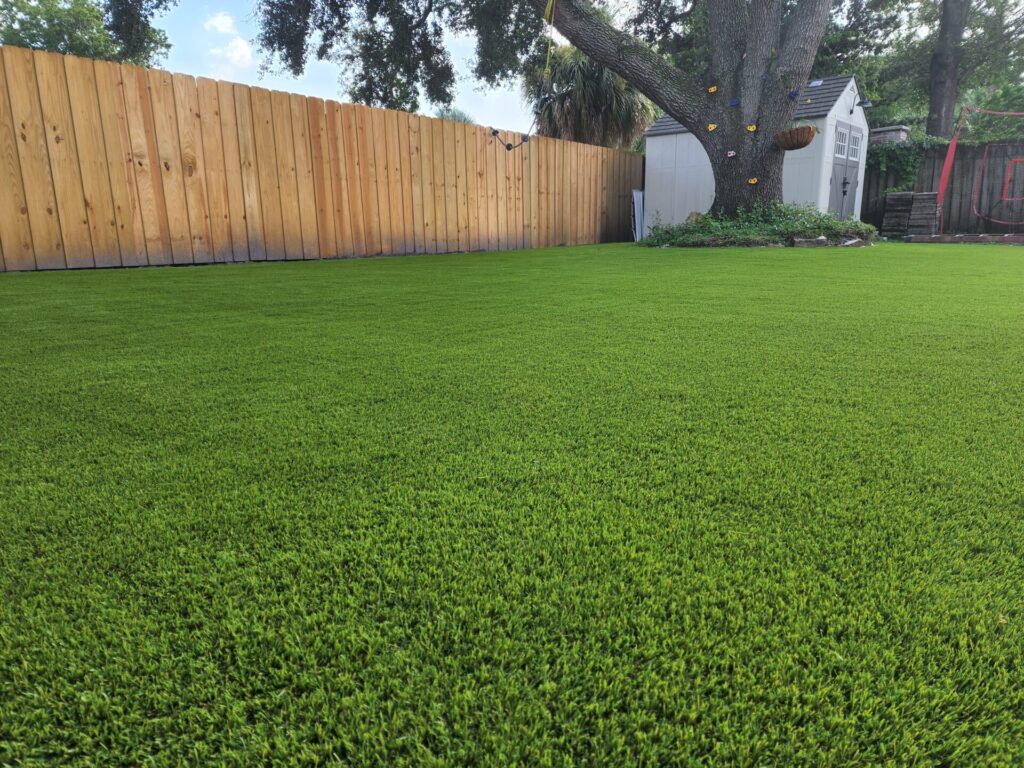You’ve probably seen them in stadiums, parks, and even in your neighbor’s lawn – beautiful green grass that never seems to change color or require watering or mowing. But have you ever wondered what this artificial grass is made of? How can it be so durable and yet look so real? In this blog post, we’ll dive deep into the world of artificial grass and discover what makes it so special. Buckle up!
Believe it or not, the first artificial grass was made of nylon and was introduced in 1965. Since then, the technology behind the materials has evolved, and now artificial grass is made of a combination of plastic and rubber. Most artificial grass blades are made of polyethylene, a type of plastic that is strong, durable, and UV resistant. The blades are designed to look and feel like real grass, so they are usually ribbed or textured to mimic the way natural grass blades lean in different directions.
The backing of artificial grass is usually made of latex or polyurethane, which holds the blades in place and provides a solid foundation. This is then infused with tiny holes to allow for water drainage in case of rain, which helps to prevent waterlogging. Without this, the grass could end up looking like a flooded paddling pool! The infill, on the other hand, is the material that provides cushioning underfoot and helps keep the blades upright. This can be made of a number of materials, including sand, rubber, and even coconut husks in some cases.
When artificial grass was first introduced, it was primarily used for sports fields and playgrounds. However, as the technology became more advanced and lifelike, it made its way into residential settings as well. Nowadays, artificial grass is often used by homeowners who want a lush lawn without the hassle of lawn care. This has not only reduced the need for water but has also reduced the carbon footprint of lawn care equipment. The fact that it requires no fertilizing, mowing, or seeding is a significant advantage to those who want a more eco-friendly lifestyle.
Despite all its benefits, there are still some concerns surrounding the use of artificial grass. Some people worry that the chemicals used in the production process could have an adverse impact on the environment and the community. Moreover, the artificial grass industry lacks any governing body, and hence, the safety of the materials used remains a concern. However, nowadays, many manufacturers produce eco-friendly artificial grass that is free from any harmful substances. This type of material is focused on eliminating any negative impact on the environment in the long run.
After an in-depth look at what astroturf is made of, it’s easy to see why it has become such a popular choice for residential and commercial settings alike. The combination of polyethylene, latex, and infill materials creates a durable yet lifelike and eco-friendly lawn that requires minimal maintenance. Even though there are still concerns to be addressed, the industry strives to produce high-quality and safe products to ensure customer satisfaction. Whether you choose to go with natural or artificial grass, the choice ultimately lies with you. But it’s clear that the innovation around synthetic turf is a clear indicator of how far the lawn industry has come over the years.
Learn more from our other great reads!
